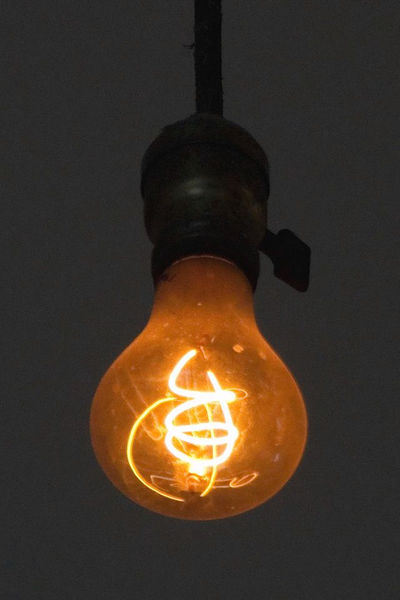LEDs are known for the long lifespan of lasting nearly 20 years compared to traditional incandescent bulbs, but one long living incandescent bulb has fought against the rule of physics and kept lighting experts baffled.
Dangling from the ceiling of a California firehouse is the Centennial Bulb that has been illuminating Livermore firehouse since its installation in 1901, according to a Priceonimics report. The bulb has been on for nearly 989,000 hours and has been rarely turned off that is nearly 20 times longer than a LED bulb with a 50,000 hour lifespan. The sturdy bulb has even outlived several surveillance cameras that are used to monitor the light’s condition.
The Centennial Bulb is a carbon-filament bulb manufactured by The Shelby Electric Company. The company founder Adolphe Chaillet, who had an affinity for Physics since an early age, graduated from both German and French science academics. After designing filaments for a large German energy company in 1896, Challiet moved to U.S.
 |
|
The Centennial Bulb that hangs from Livermore firehouse in California, U.S. holds the Guiness Record for longest living light bulb. (Photo Courtesy of Wikipedia) |
He worked for GE for a brief period before securing $100,000 from investors and opening his own light bulb factory, Shelby Electric Company. To demonstrate his bulbs were the brightest and longest-lasting, Chaillet hosted a live “forced life” demonstration before the public. The bulbs were placed under increasingly higher voltages, and while all other brands burned out or exploded, Shelby bulbs endured the test.
Chaillet’s business picked up in March the following year, when the company received so many orders that it had to expand and double production. By the end of 1897, the company production output doubled from 2,000 to 4,000 per day. However, it was not long before new lighting technologies such as tungsten filaments emerged and the company found it increasingly difficult to acquire financing to compete. After being acquired by GE in 1914, the Shelby bulbs were discontinued.
The patent and exact technologies used for the bulbs remain a mystery since Chaillet’s patent filings remain vague, and modern researchers have been unable to find the reason behind the bulbs longevity.
In 2007, Annapolis physics professor Debora Katz conducted a series of tests on another Shelby bulb she purchased. Her findings, though, were inconclusive. She speculated the Shelby bulb’s filament which is eight times thicker than a modern bulb, might be key to the bulbs long life. Modern bulbs use thinner tungsten filaments and put out more light 40 to 200 watts and burn hotter, compared to Shelby bulbs 30 to 60 watts. “You can think of it as sort of an animal with a low metabolism,” she reported to the Centennial Light’s committee. “It’s giving us less energy per time, so it can keep on going longer.” Another reason cited was the fact the bulb was kept on for long periods of time, instead of being turned on or off.
Justin Felgar, one of Katz’s students, explored the light bulb further. In his 2010 paper “The Centennial Light Filament” Felgar found the hotter the Shelby lights the more electricity passed through the light, which is opposite of what happens to modern tungsten filaments. To find the exact chemical components of the bulb, it would have to be taken apart and run through the Naval Academy’s particle accelerator, but due to the high costs involved it has not been attempted. The bulbs longevity remains a physic mystery.












